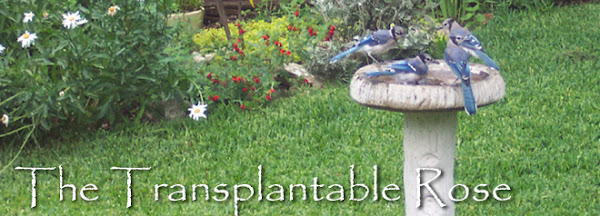

Our previous house had a deck, and we wanted to grow plants with white blooms on it, to glow in the evening when we were in the pool. We chose a semi-dwarf crepe myrtle, Lagerstroemia ‘Acoma’, for its white flowers and smaller size.
The original plan was to grow the crepe myrtles in pots for a year or two, then plant them in front of the house. That plan fizzled, and our two young trees were trapped in their large cylindrical, clay containers for more than 5 years, where they rarely produced a flower. By the time we moved here, they were barely 2-feet tall, and they’d contorted themselves into twisted, cascading bonsai specimens, sending their almost leafless branches down over the sides of the crumbling pots toward the deck, away from the sun. Using them as normal trees was no longer an option, and we were advised to just ditch them and start over.
But Philo & I like to experiment, so we gave them a second chance, pruning out the interiors, and coaxing them into a sort of espalier form along the fence. Two years of reshaping have encouraged them to grow trunks, with branches arching upward and outward, and the Acomas now graze the top of the 6-foot privacy fence. By next summer, they should filter our view of the neighbors’ pink tree. The trunk shape is spare, flat & angular, while the branch tips bend with the weight of the flowers, and there is enough air and light around the trees for other plants to grow.
Our Acomas bear little resemblance to the multi-trunked crepe myrtles growing like separate, huge, stalked bouquets around the shopping malls, for their charm is not that of a natural plant grown well to its full potential. Instead these blooming survivors cast weird, skeletal, interesting shadows on the fence.









Your Acoma looks gorgeous. We have a pink crepe myrtle at our front door which is bare at the moment but produces awesome flowers in summer.
ReplyDeleteIs that a bouganvillea behind the fence?
What a cool idea!
ReplyDeleteI love crepe myrtles but they don't grow here. My mom, one zone higher, has one that dies back to the ground each year, but she keeps it because it just barely manages to survive.
I really like the different shape! It goes well with the fluffy white blooms.
ReplyDeleteYou weren't kidding when you said the neighbor's was pink.
Maybe the Acoma will really fill out when it reaches the top of the fence!
That's a nice shape. I prefer crepe myrtles that have just one or two trunks, versus the multi-trunked shrubby types. I have one youger crepe myrtle that I'd like to prune as a tree, but I'm afraid to take off too much all at once.
ReplyDeleteI remember working at Christensen’s Nursery in Belmont, just south of San Francisco, where there was one unusual tree that every year would develop the worst case of powdery mildew. I don’t even know why we carried it. I learned it was called a crape myrtle. You see, there were no crape myrtles around, as the weather was to damp and my entire nursery experience had been in The Bay Area. When I moved to the foothills I soon learned they were a great tree where our summers are so hot. Now with the new mildew resistant varieties they have even more uses.
ReplyDeleteIf I showed you the whole photo you'd know that even when it's full grown, my 'Acoma' will barely be able to soften the overwhelming presence of that pink crepe myrtle that shows over the fence. The bright pink one is about 16' tall and 12' wide. The leaves are okay right now, but will soon turn moldy white, and I dig up dozens of seedlings from it every year. Sometimes 'borrowed scenery' can be cool, but this tree is just a messy, screaming blob as far as I'm concerned.
ReplyDeleteTrey, 'Acoma' was bred to be resistant to the powdery mildew, and has been okay so far.
[If anyone has noticed the 'crepe'/'crape' spelling, there are advocates of each one, but neither is wrong. I just like 'Crepe' better.]